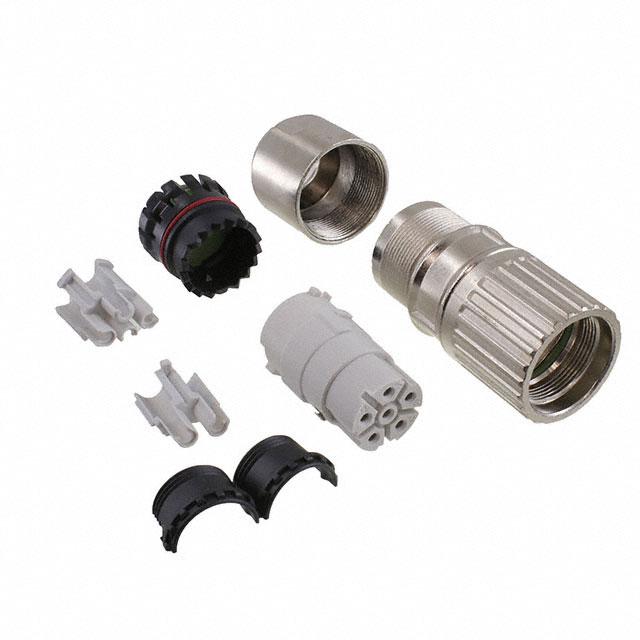
Introduction
The rapid expansion of electronics and electrical applications has increased the demand for reliable connectivity solutions. Whether in industrial plants, commercial buildings, or household wiring, components like cable connectors and junction boxes are indispensable. These elements form the backbone of safe, efficient, and long-lasting electrical installations. By understanding their functions and the different types of cable connectors, engineers, electricians, and end-users can make informed decisions that improve performance, safety, and cost efficiency.
What Are Cable Connectors?
Cable connectors are devices designed to join electrical circuits together. They provide secure mechanical connections and maintain proper electrical conductivity. In electronics, these connectors come in various designs, from simple plug-and-socket arrangements to advanced multi-pin assemblies used in data centers, industrial machinery, and aerospace electronics.
Their importance lies not only in enabling current or signal flow but also in ensuring reliability under different environmental conditions. Features like corrosion resistance, insulation, and shielding make them suitable for use in demanding electronics environments such as automotive wiring, medical equipment, and telecommunications systems.
Types of Cable Connectors
Different applications require different connector styles. Some of the most widely used types of cable connectors in electronics include:
- Coaxial Connectors: Used for RF signals in antennas, radios, and communication systems.
- Modular Connectors: Commonly seen in networking equipment, such as RJ45 connectors for Ethernet cables.
- USB Connectors: Found in nearly every consumer electronic device, offering data transfer and power supply.
- Circular Connectors: Provide robust connections in industrial equipment, sensors, and military-grade electronics.
- Terminal Blocks: Widely used in control panels and electrical distribution boards.
Each connector type is designed with specific voltage, current, and frequency handling capabilities, ensuring they meet the demands of different electronic systems.
The Role of Junction Boxes in Electronics
While connectors join cables, a junction box serves as the protective housing for cable connections. Typically made from plastic, metal, or fire-resistant composites, junction boxes shield electrical connections from dust, moisture, and accidental contact.
In electronics and electrical installations, junction boxes are crucial for:
- Safety: Preventing electrical shocks and fire hazards.
- Organization: Keeping wiring systems neat and accessible for maintenance.
- Protection: Safeguarding against mechanical damage and environmental stress.
- Scalability: Allowing additional circuits or modifications in the future.
In industrial electronics, junction boxes are often equipped with IP-rated enclosures, ensuring that sensitive electronic circuits remain operational even in harsh conditions like high humidity, dust-filled environments, or outdoor installations.
Applications Across Electronics and Electrical Systems
• Industrial Automation
Factories use cable connectors to link programmable logic controllers (PLCs), sensors, and actuators. Junction boxes serve as control hubs where multiple connections converge, allowing safe management of large-scale wiring systems.
• Consumer Electronics
From charging ports in smartphones to audio connectors in headsets, cable connectors ensure efficient and reliable electronic performance. Junction boxes in households protect power circuits and provide easy access for electrical upgrades.
• Data Centers and Networking
Cable connectors such as fiber optic connectors and RJ45 modular plugs are essential in high-speed data transfer. Junction boxes protect structured cabling and reduce interference in sensitive electronics environments.
• Automotive Electronics
Modern vehicles rely heavily on connectors for systems like lighting, infotainment, and engine management. Junction boxes act as protective housings for critical wiring in automotive circuits, ensuring consistent performance under vibration and temperature extremes.
Advantages of Choosing the Right Connectors and Junction Boxes
• Safety and Reliability
Incorrectly matched connectors can lead to overheating, signal loss, or short circuits. By selecting appropriate cable connectors and quality junction boxes, the integrity of the electronic system is preserved.
• Ease of Maintenance
Connectors allow quick disconnection for testing or replacement of faulty equipment. Junction boxes provide organized access points for technicians, reducing downtime.
• Enhanced Performance
High-quality connectors reduce resistance, prevent signal interference, and ensure consistent voltage delivery across electronic systems.
• Longevity of Systems
Protective junction boxes reduce the risk of environmental damage, extending the service life of electrical and electronic installations.
Trends in Cable Connectors and Junction Boxes
The electronics industry is evolving rapidly, and so are these components. Some key trends include:
- Miniaturization: Smaller, more compact connectors are required for modern consumer electronics.
- Smart Junction Boxes: Integration with sensors and IoT devices allows real-time monitoring of electrical loads.
- High-Speed Data Support: Connectors are being designed to handle faster data transmission for 5G and beyond.
- Eco-Friendly Materials: Manufacturers are adopting recyclable plastics and energy-efficient production methods to support sustainability.
Maintenance and Best Practices
To maximize performance, connectors and junction boxes must be properly maintained. Electronic engineers recommend:
- Inspecting for corrosion or wear in metal connectors.
- Ensuring tight connections to prevent arcing.
- Using IP-rated junction boxes in harsh environments.
- Regular testing with electronic instruments such as multimeters to verify continuity and insulation resistance.
Proper installation techniques, like using strain relief and shielding, also ensure long-term reliability.
Conclusion
Cable connectors and junction boxes may appear as simple components in electrical and electronic systems, but their role is foundational. They ensure safety, efficiency, and adaptability across countless applications, from consumer devices to large-scale industrial operations. Understanding the different types of cable connectors helps users select the right solution, while junction boxes provide the protection and organization necessary for long-term reliability.
In an industry that demands precision and resilience, these components remain indispensable. As electronics advance with IoT, automation, and smart systems, connectors and junction boxes will continue to evolve—empowering engineers, electricians, and businesses to achieve safer and more efficient connectivity.
